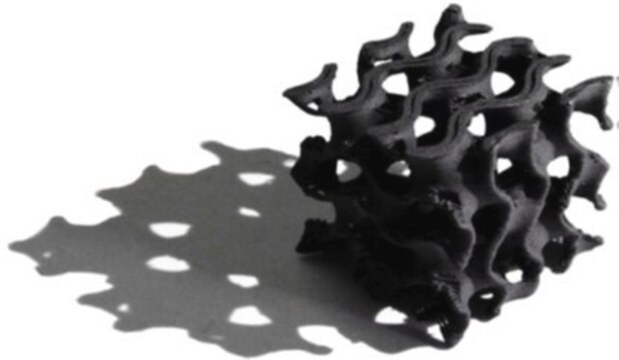901950
Alginate-RGD bioink
suitable for 3D bioprinting applications
About This Item
Polecane produkty
Postać
viscous liquid
zanieczyszczenia
<25 EU/mL Endotoxin
kolor
white
pH
6.5-7
gęstość
1.050 g/mL
Zastosowanie
3D bioprinting
temp. przechowywania
2-8°C
Opis ogólny
Material comes prepackaged in syringe with 5ml of product.
Zastosowanie
Informacje prawne
Kod klasy składowania
12 - Non Combustible Liquids
Klasa zagrożenia wodnego (WGK)
WGK 2
Temperatura zapłonu (°F)
Not applicable
Temperatura zapłonu (°C)
Not applicable
Wybierz jedną z najnowszych wersji:
Certyfikaty analizy (CoA)
Nie widzisz odpowiedniej wersji?
Jeśli potrzebujesz konkretnej wersji, możesz wyszukać konkretny certyfikat według numeru partii lub serii.
Masz już ten produkt?
Dokumenty związane z niedawno zakupionymi produktami zostały zamieszczone w Bibliotece dokumentów.
Klienci oglądali również te produkty
Produkty
Bioinks selection guide for 3D bioprinting of cells for tissues engineering applications.
Professor Shrike Zhang (Harvard Medical School, USA) discusses advances in 3D-bioprinted tissue models for in vitro drug testing, reviews bioink selections, and provides application examples of 3D bioprinting in tissue model biofabrication.
Professor Shrike Zhang (Harvard Medical School, USA) discusses advances in 3D-bioprinted tissue models for in vitro drug testing, reviews bioink selections, and provides application examples of 3D bioprinting in tissue model biofabrication.
Profesor Shrike Zhang (Harvard Medical School, USA) omawia postępy w biodruku 3D modeli tkankowych do testowania leków in vitro, dokonuje przeglądu wyboru biokomponentów i przedstawia przykłady zastosowań biodruku 3D w biofabrykacji modeli tkankowych.
Nasz zespół naukowców ma doświadczenie we wszystkich obszarach badań, w tym w naukach przyrodniczych, materiałoznawstwie, syntezie chemicznej, chromatografii, analityce i wielu innych dziedzinach.
Skontaktuj się z zespołem ds. pomocy technicznej
